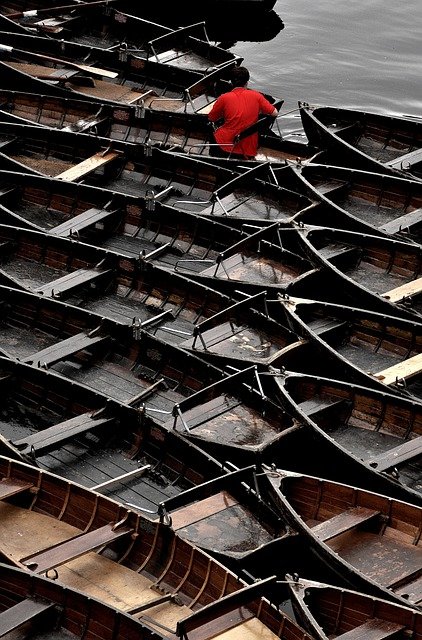Whisper Villages: The Charm of Ultra-Secluded Communities Accessible Only by Boat
Imagine waking up to the gentle rhythm of water lapping against ancient wooden stilts, where your nearest neighbor is reached not by road but by rowboat, and daily essentials arrive via a floating market that has operated for centuries. In these remarkable settlements across the globe, homes stand on water or nestle in coastal pockets unreachable by conventional means. Their isolation has preserved traditions, architectural marvels, and ways of life that have elsewhere vanished. Far from tourist-heavy destinations, these boat-access-only communities offer an authentic glimpse into sustainable living systems that have endured for generations, where transportation innovations remain centered on water navigation rather than wheels.

The Fascinating World of Boat-Only Settlements
The concept of communities accessible only by watercraft dates back thousands of years, emerging from necessity rather than choice. Early civilizations often established settlements near water bodies for survival, with some evolving into sophisticated water-based societies. From the floating reed islands of Peru’s Lake Titicaca to the stilt houses of Southeast Asia, humans have demonstrated remarkable ingenuity in adapting to watery environments. These settlements emerged for various reasons—some for defense against land predators or invaders, others to maximize fishing opportunities, and some simply because the landscape offered no alternative transportation routes. What began as practical solutions to geographical challenges evolved into rich cultural identities that continue to define these communities today.
The Mechanics of Daily Life Without Roads
Life without roads demands creative solutions for everyday activities. In Venice’s smaller islands and Colombia’s Nueva Venecia, residents have developed ingenious transportation systems using specialized boats for different purposes—from narrow, maneuverable vessels for “commuting” to larger craft for transporting building materials and goods. Postal services arrive by boat, with mail carriers navigating intricate water routes with remarkable precision. Medical emergencies require dedicated emergency water transport services, with some communities maintaining specially equipped medical boats. Education systems adapt too, with floating schools in places like Cambodia’s Tonle Sap Lake and teacher-navigated boat routes in Thailand’s coastal villages. This boat-centric lifestyle has spawned specialized professions found nowhere else—expert navigators who memorize seasonal water paths, boat builders with techniques passed through generations, and maintenance specialists who understand the unique challenges of water-exposed infrastructure.
Architectural Marvels: Building for Boat-Only Access
The architecture of boat-only communities represents some of humanity’s most innovative adaptations to challenging environments. In Norway’s fjord settlements, homes are constructed with specialized dock systems that accommodate dramatic tidal changes, while Indonesia’s Bajau sea communities build entire structures on stilts that respond to changing water conditions. These communities have developed unique construction techniques using locally available materials—often repurposing boat components for building structures. Transportation limitations have led to fascinating architectural solutions: modular designs that can be transported piece by piece via small vessels, collapsible components, and building techniques that require minimal large equipment. Perhaps most remarkably, many of these communities have maintained traditional methods for centuries, with apprenticeship systems ensuring knowledge continues through generations. Recent innovations have begun incorporating modern materials and sustainability features while respecting traditional aesthetics and practical demands of water access.
Cultural Preservation Through Isolation
The relative isolation of boat-only communities has unintentionally created cultural preservation capsules where traditions, languages, and practices continue relatively unchanged. In Myanmar’s Inle Lake villages and small Philippine island communities, distinctive dialects with specific boat-navigation terminology have survived when similar linguistic variations disappeared elsewhere. Unique social customs have evolved around water-based living—from courtship rituals involving skilled boat handling to coming-of-age ceremonies centered on navigation mastery. Religious and spiritual practices often incorporate water elements, with temples and shrines built to be accessible by boat and ceremonies designed for aquatic settings. Even culinary traditions reflect boat-accessible ingredients and cooking methods adapted for floating kitchens. This cultural continuity offers anthropologists and linguists rare opportunities to study practices that have disappeared in more accessible regions, while providing community members with strong cultural identities that withstand homogenizing global influences.
The Modern Challenges of Ancient Systems
Today’s boat-only communities face complex challenges balancing tradition with contemporary needs. Climate change poses existential threats, with rising sea levels endangering stilt villages and changing weather patterns disrupting generations-old navigation routes. Infrastructure development presents complicated questions—how to provide reliable electricity, internet connectivity, and waste management without road access? Healthcare access remains limited, with residents often traveling hours by boat for specialized medical care. Educational opportunities beyond primary levels typically require young people to leave their communities. The allure of modern conveniences has led to outmigration of younger generations, threatening cultural continuity and creating labor shortages for traditional industries. Yet these challenges have also sparked innovation—solar power systems designed for salt-water environments, floating internet towers, specialized telehealth programs, and creative economic development initiatives that celebrate rather than replace traditional lifestyles.
Essential Knowledge for Visiting Boat-Only Communities
-
Always arrange transportation in advance—most communities have designated boat operators for visitors rather than accepting random arrivals
-
Pack minimally in waterproof bags—large luggage is impractical and there’s typically limited storage space
-
Bring local currency in small denominations—ATMs and card payments are rare or nonexistent
-
Purchase gifts that acknowledge water-based lifestyles—fishing supplies, waterproof items, or solar chargers are more appropriate than standard souvenirs
-
Learn basic boat etiquette before visiting—including how to enter/exit vessels safely and proper seating arrangements
-
Respect photography boundaries—many water communities have specific rules about documenting ceremonial spaces or private areas
The whisper villages of our world—those secluded communities where boats replace buses and water lanes substitute for paved roads—offer more than just picturesque views for travelers seeking something different. They represent living laboratories of human adaptation and resilience, showcasing sustainable practices developed over centuries of necessity. As these communities navigate the complex waters between preservation and modernization, they remind us that transportation limitations can foster incredible ingenuity rather than isolation. For the thoughtful traveler, these boat-only settlements provide not just a destination but an immersion into alternative possibilities for human habitation—ones where the journey itself remains as meaningful as the arrival.





